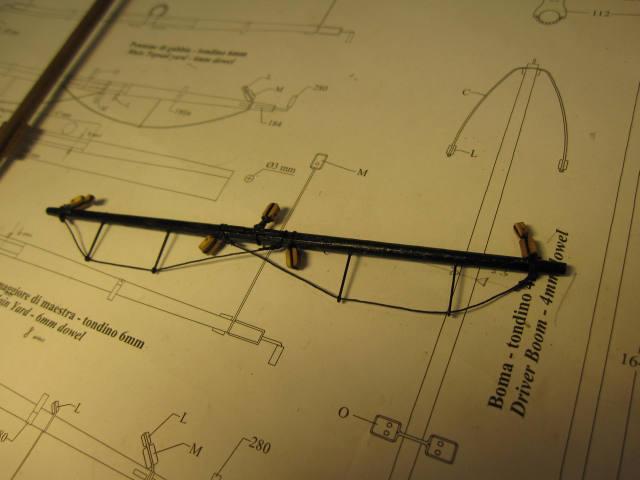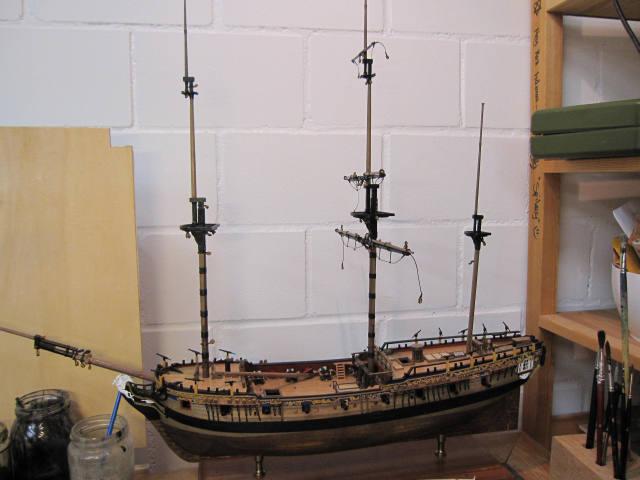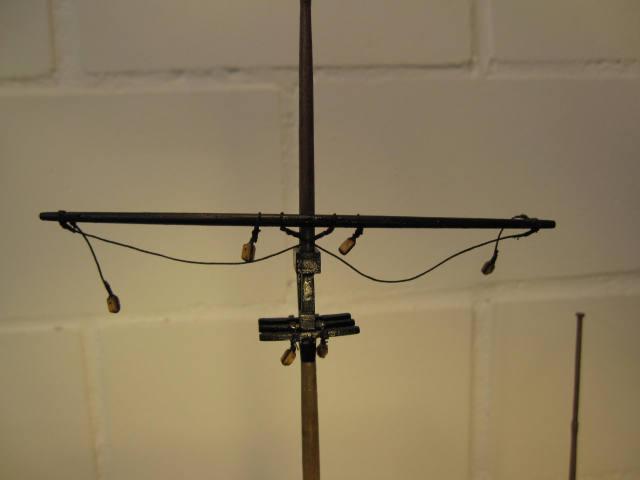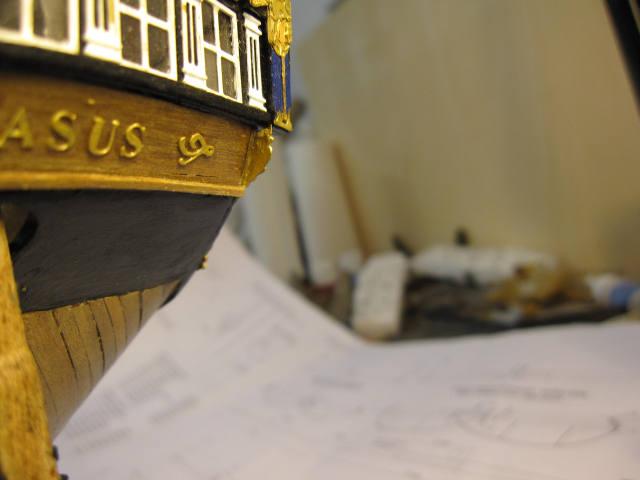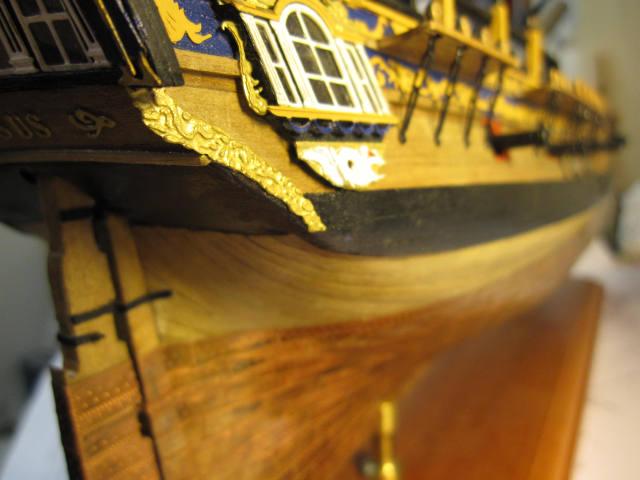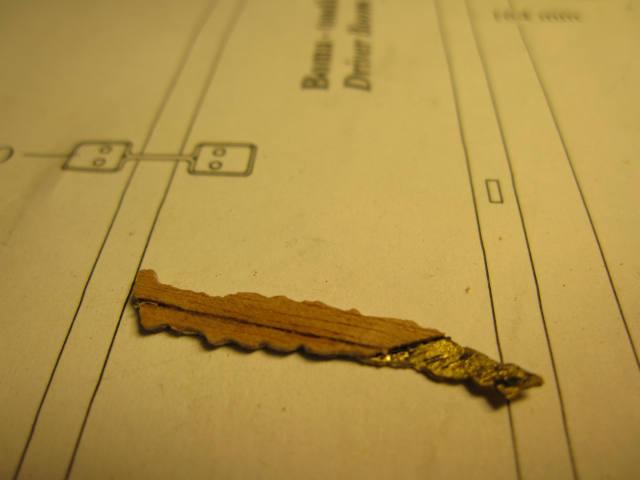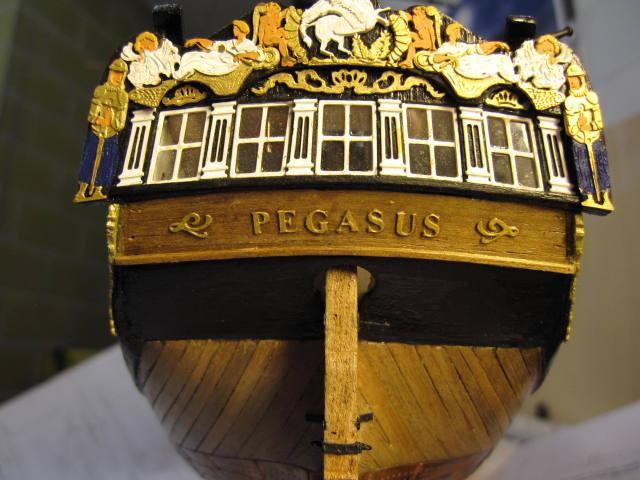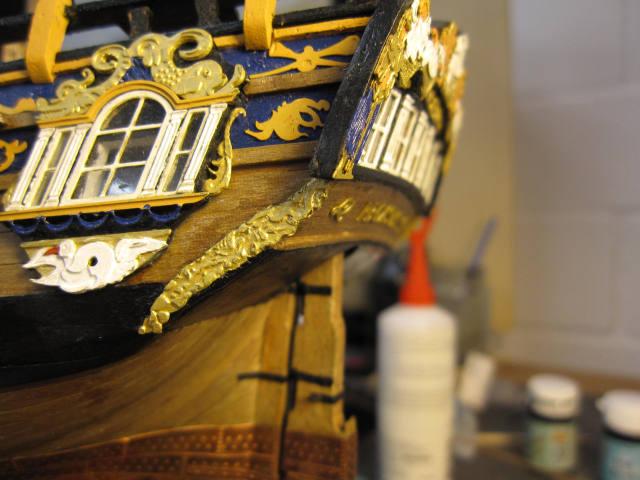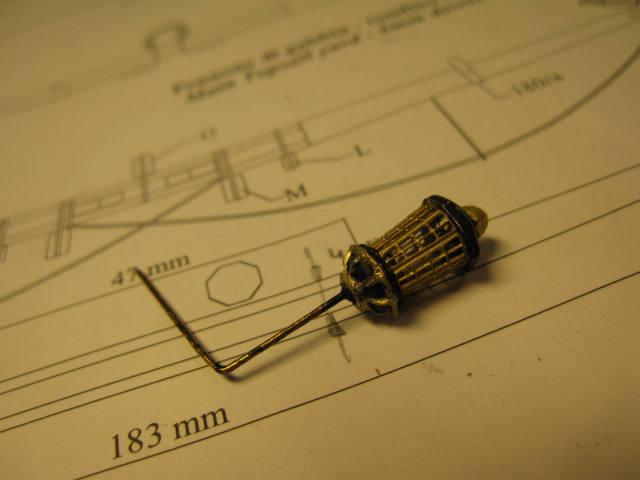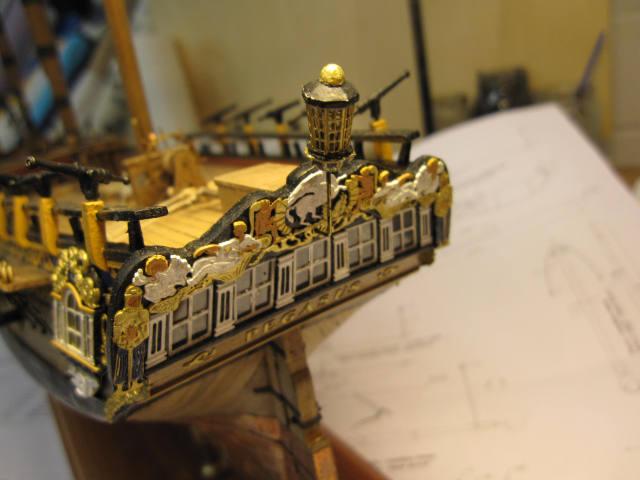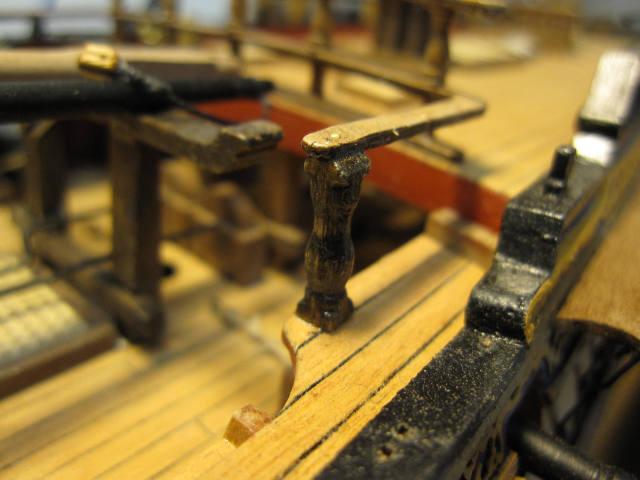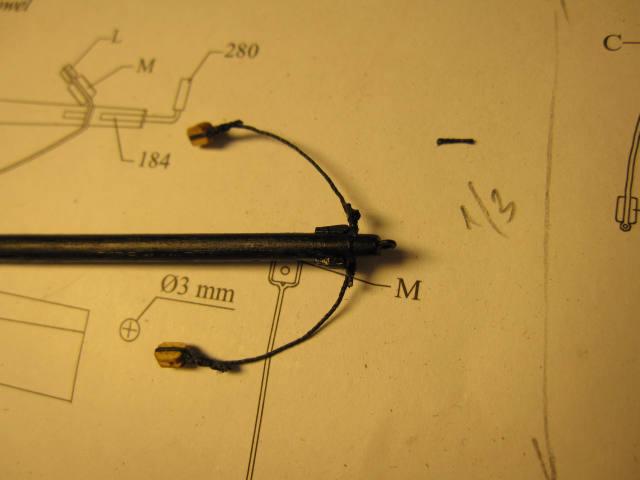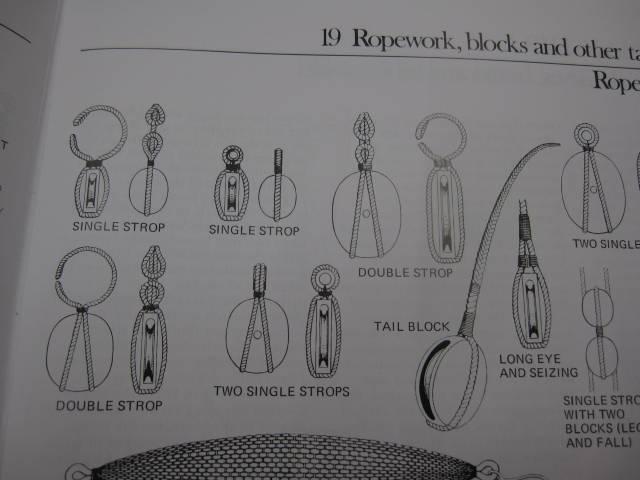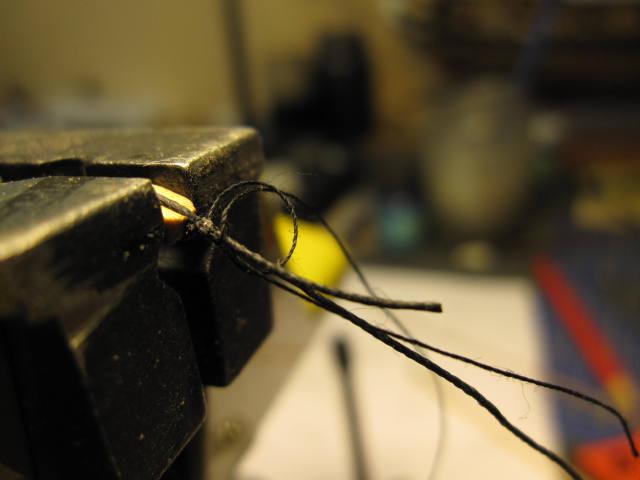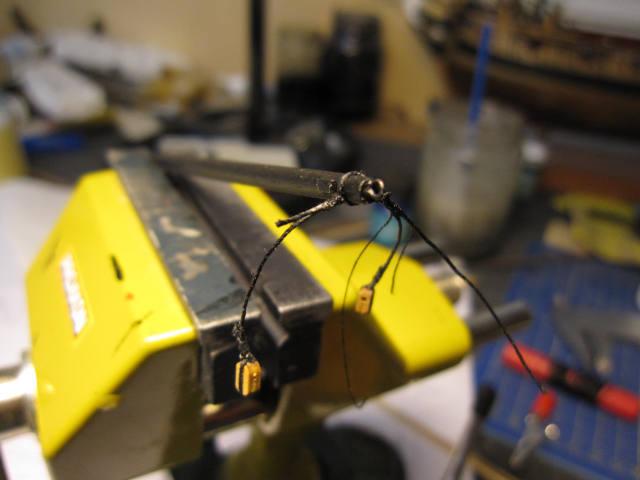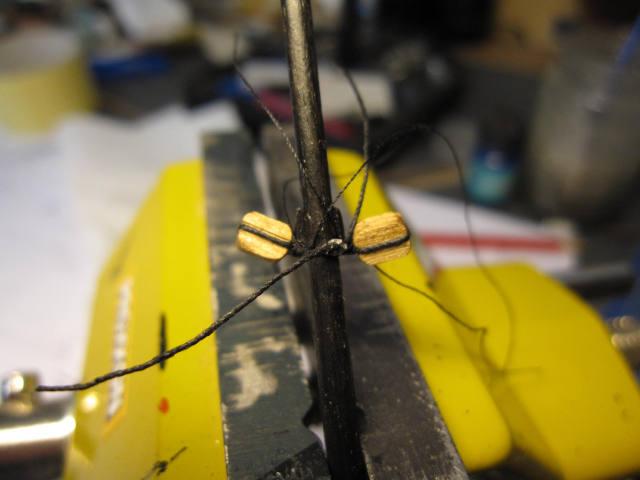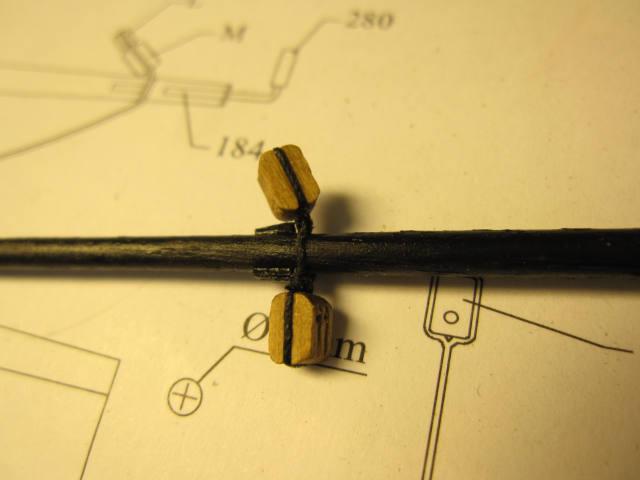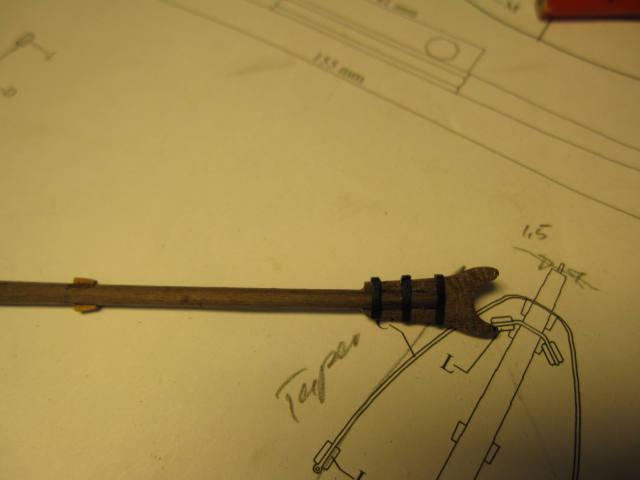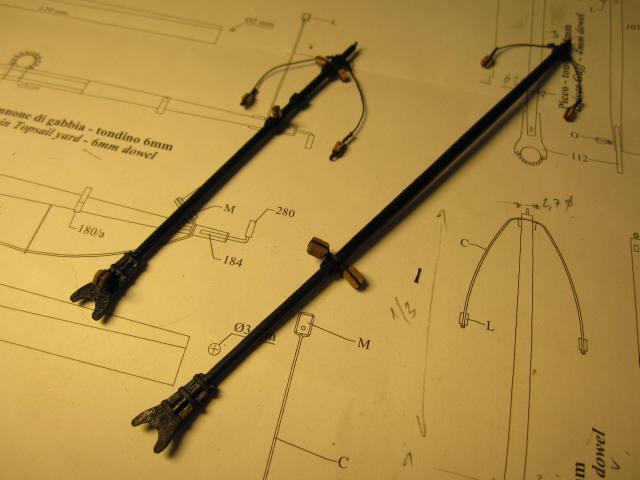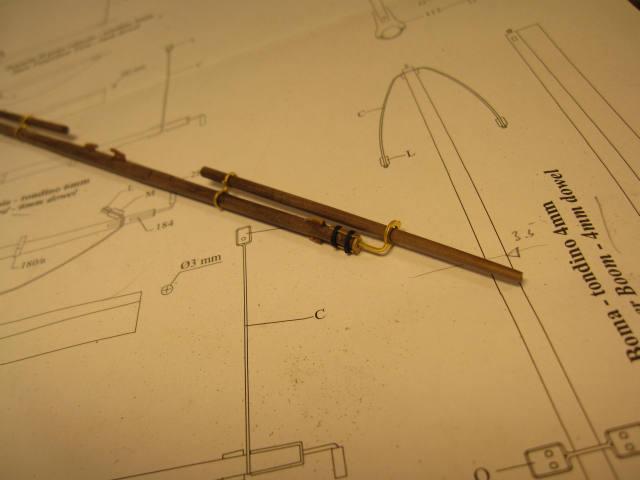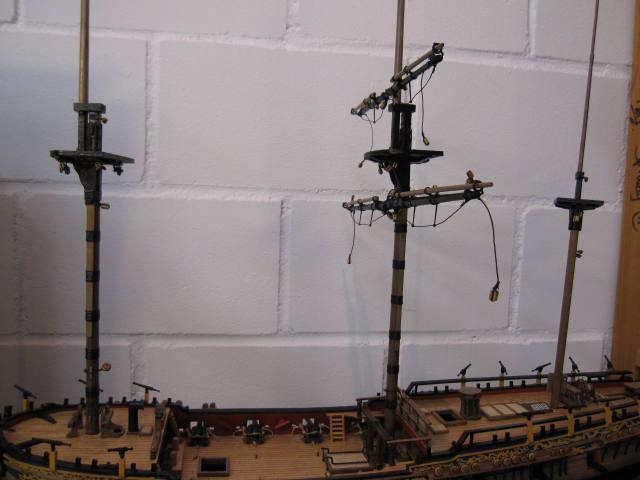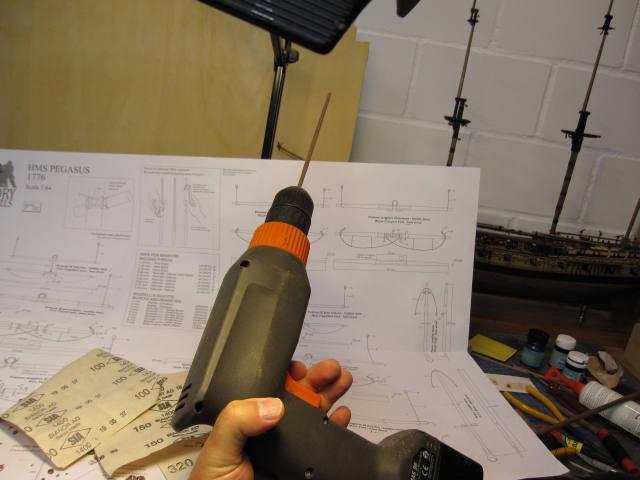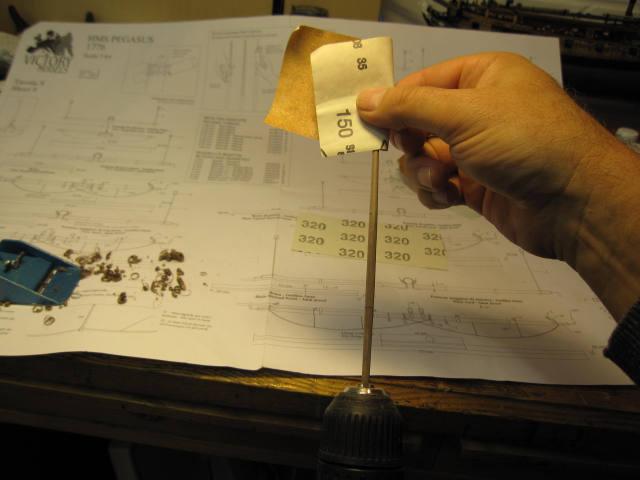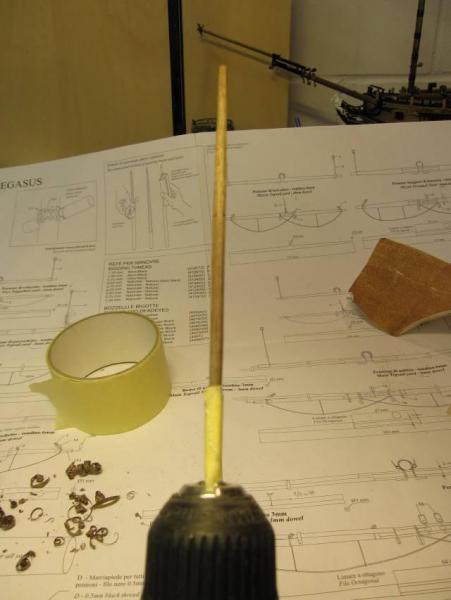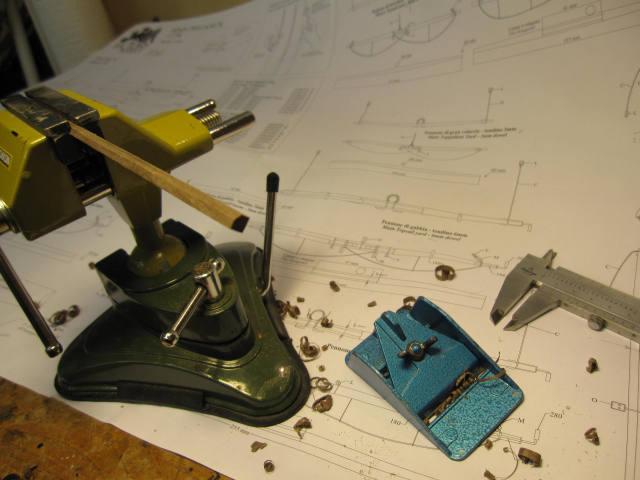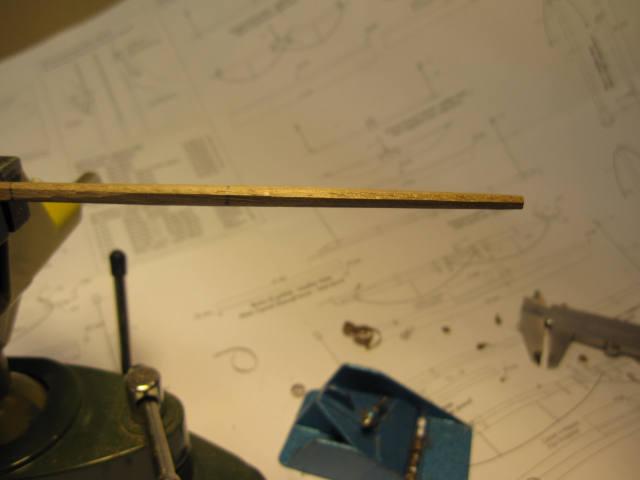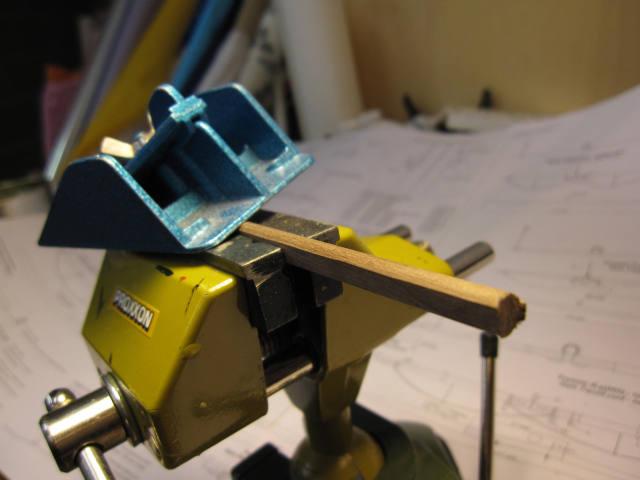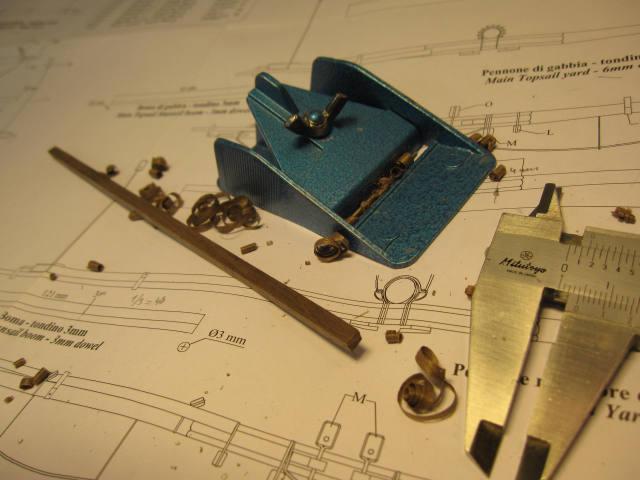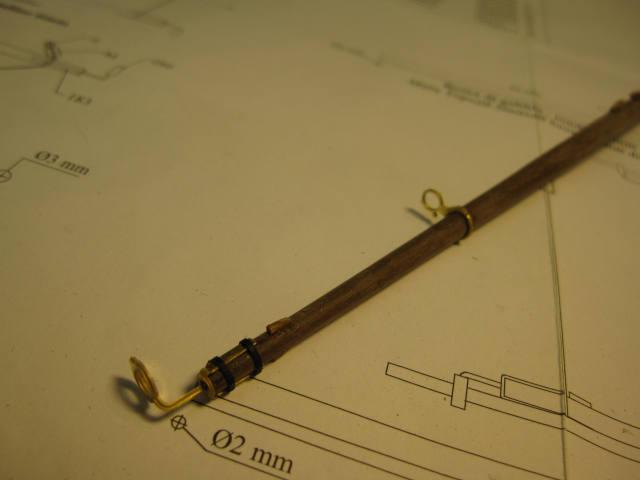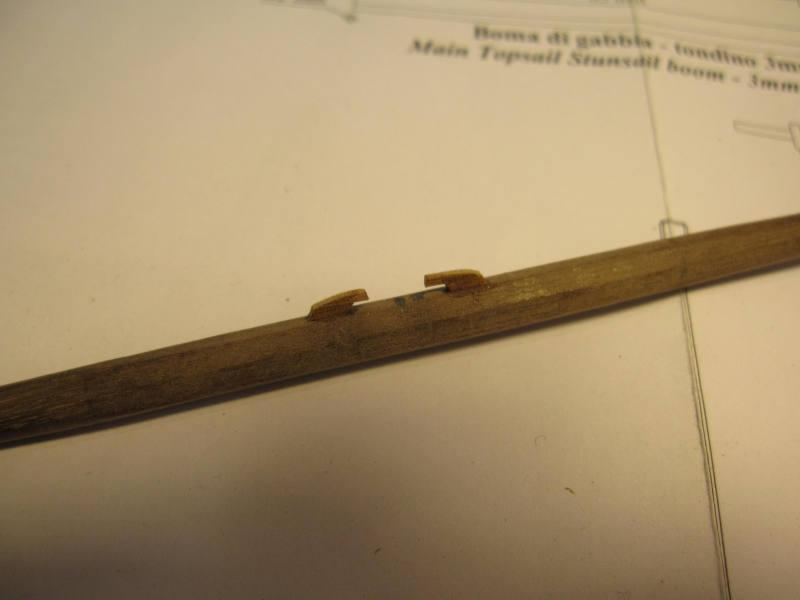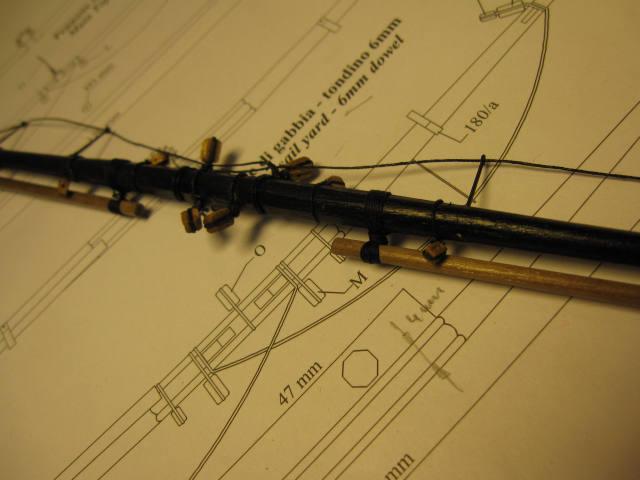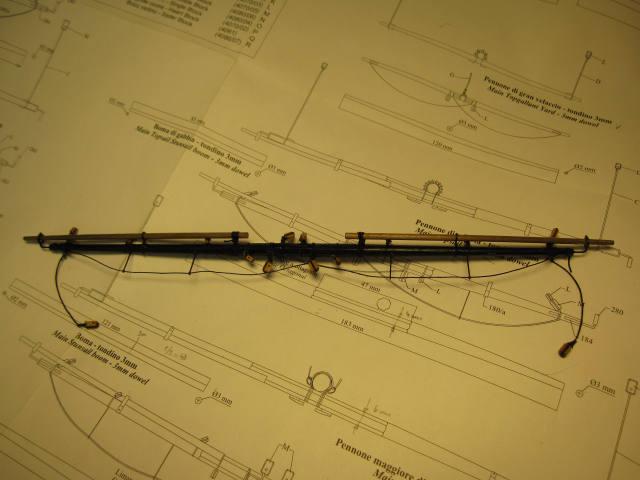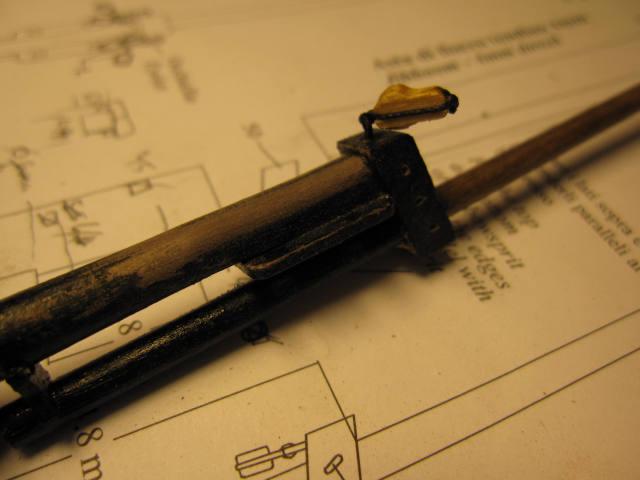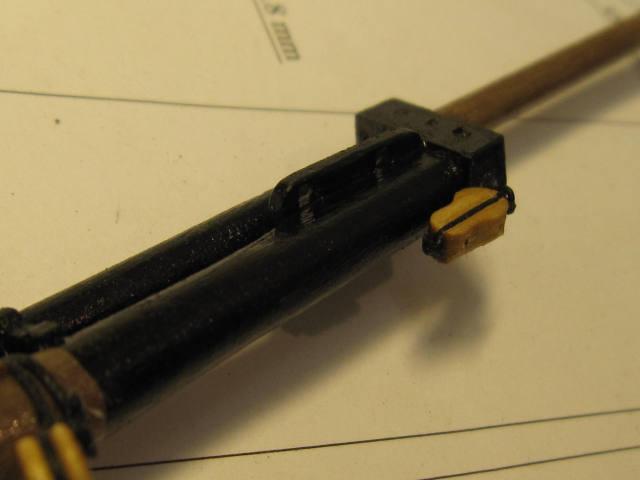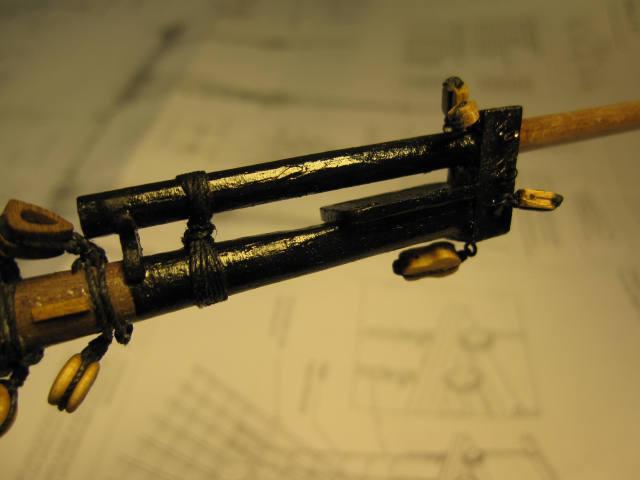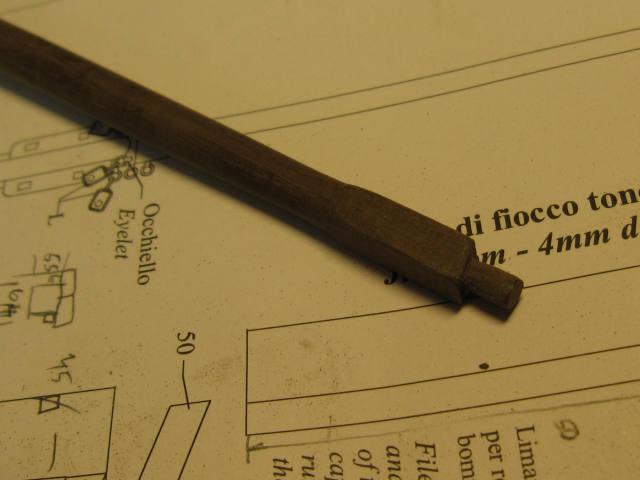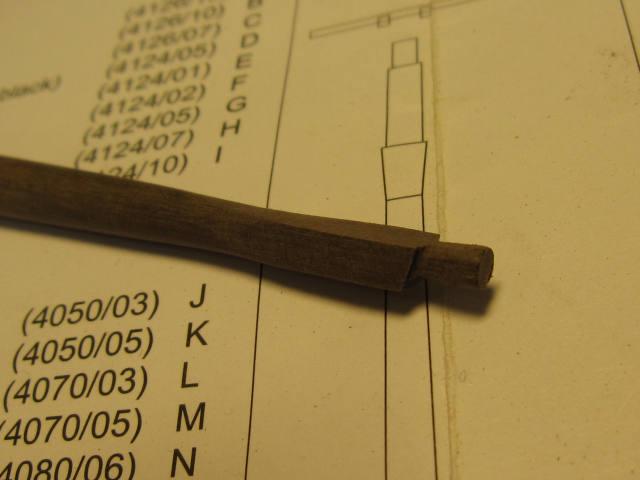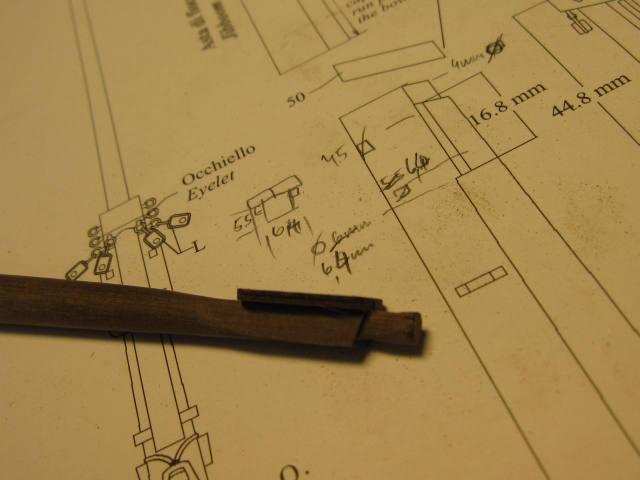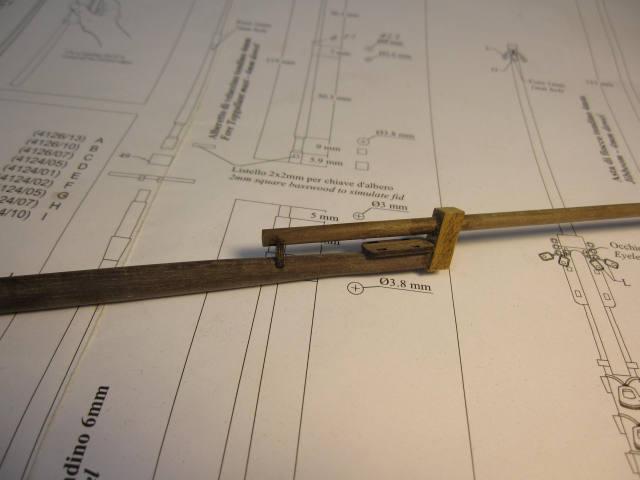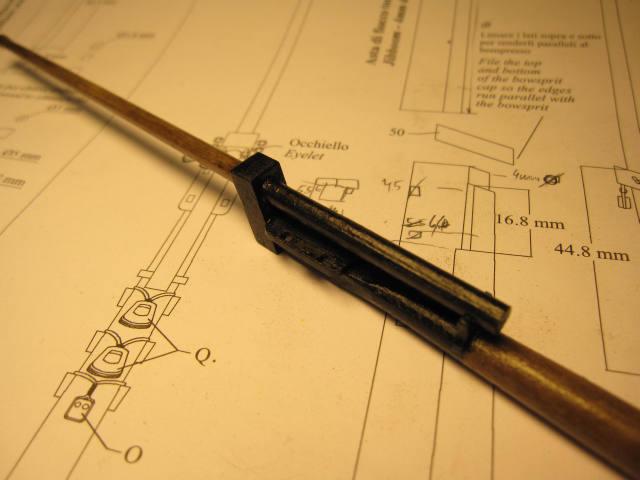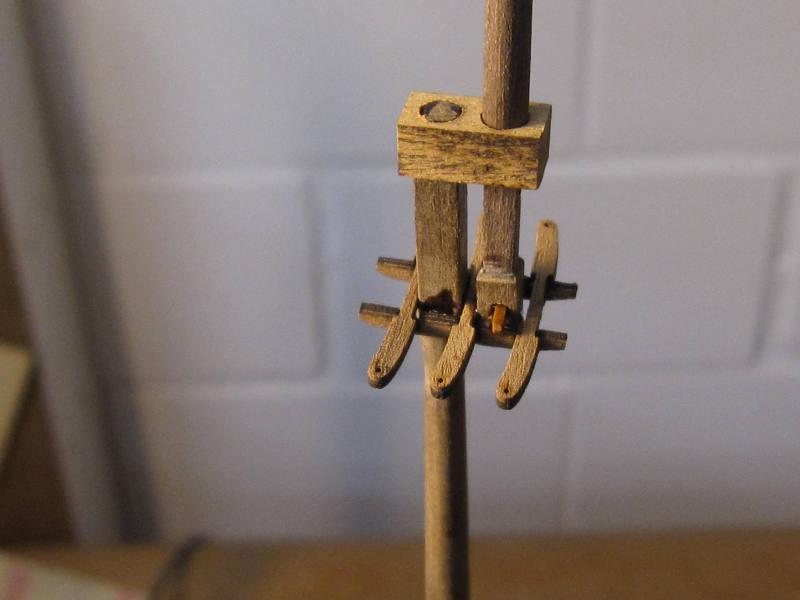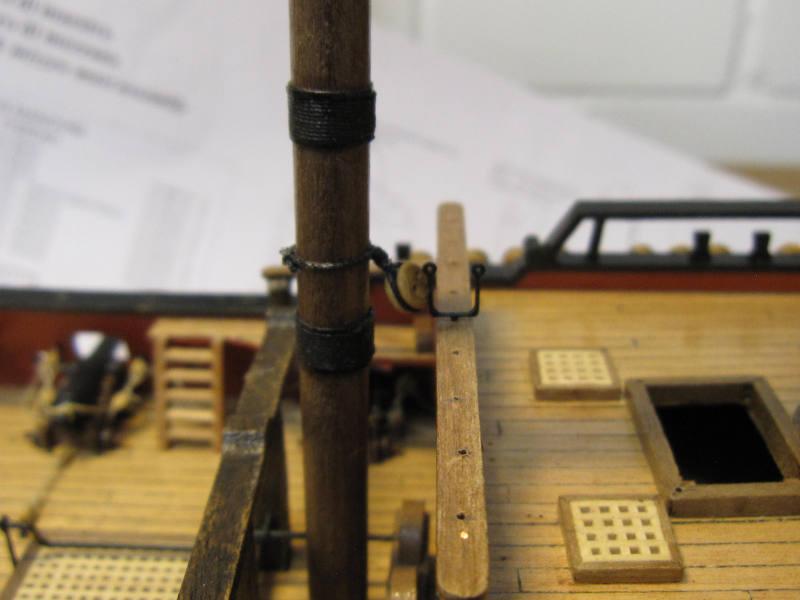-
Posts
1,016 -
Joined
-
Last visited
Content Type
Profiles
Forums
Gallery
Events
Everything posted by flyer
-
Thank you Mobbsie …although – isn’t there some horse in it? Cheers Peter
- 431 replies
-
- pegasus
- victory models
-
(and 1 more)
Tagged with:
-
Hi B.E. Congratulations on a superb build! Outstanding! I love your boxwood coloring. Before starting my current build I was considering Pickle but I really disliked some details. You did away some of my concerns (transom, size of the boats) but others are remaining. I don’t believe that a boat really was stowed off centerline thus creating not only a miss trim by its weight but also by the possibility for the wind to get some hold on it. And in addition some gun ports are blocked too. You could balance the weight by putting more guns on the opposite side but you still would have to rearrange your armament every time you use the boat. So why not ask for smaller boats which could be stowed between the masts? Probably you know that contemporary picture of Pickle, where the fore mast seems straight rectangular to the deck while the main mast keeps its aft fall. The Royal Naval Museum model of Pickle has its fore mast set more forward (with aft fall). Both variations are moving the balance point of the sail area more forward than on Caldercrafts Pickle which means its fore mast position seems at least questionable. I put those questions forward to Caldercraft. The answer was that they couldn’t change the original plans and left the question open why on that contemporary picture pickle looks different. What do you think? Cheers Peter
- 87 replies
-
- pickle
- caldercraft
-
(and 1 more)
Tagged with:
-
The crossjack yard was again reduced in diameter to a maximum of 4mm across the octagonal section. So I could use the 6mm dowel. The diameter of the mizzen topsail yard was reduced to 3mm, making it rather similar to the main topgallant yard. Checking those lighter yards provisionally mounted on the masts I find the overall picture quite convincing. Crossjack yard finished Provisionally mounted
- 431 replies
-
- pegasus
- victory models
-
(and 1 more)
Tagged with:
-
- 431 replies
-
- pegasus
- victory models
-
(and 1 more)
Tagged with:
-
The correction of the lower counter’s sides was next. When first attaching the ornamental piece, I had problems to place it. A main reason could be the straight instead of concave lower counter. (That’s another one of those mistakes which I found out too late to correct it.) First I peeled the offending pieces carefully off. Then I started to cut away with a small cutting wheel following the ornamental lines. The part above the main wale was doubled up with some spare deck planks. After some gilding with paint it could be reinstalled. Voila! It does look better. Old look... ...with the ornamental piece heavily overhanging the counter. Doubling up the peeled off piece The new look
- 431 replies
-
- pegasus
- victory models
-
(and 1 more)
Tagged with:
-
Hi Aldo Well I try to be not to hard on me. Thanks anyway. But looking at what our fellow model ship enthusiasts demonstrate in this forum I sometimes wish I could take everybody’s best tricks… Do you have a picture of the actual installation of the lantern on HMS Atalanta? Cheers Peter
- 431 replies
-
- pegasus
- victory models
-
(and 1 more)
Tagged with:
-
A rather easy improvement was the addition of a ships lantern. While browsing trough caldercraft’s fittings I found that the tops lantern should fit Pegasus as a single transom lantern. For obvious reasons it was only provisionally installed. Assembled lantern (needs some repainting) Provisionally installed. I guess it will need two additional diagonal struts for the final installation.
- 431 replies
-
- pegasus
- victory models
-
(and 1 more)
Tagged with:
-
All the time, while I was building the yards I kept looking at the Pegasus and was comparing her with other build logs. Several points were either differing with other models or with contemporary pictures in the web and either they were nagging me or had to be explained: I know, that the colouring of the ship was probably different (e.g. more red on the deck fittings etc.) but as all you probably have are snapshots or descriptions of one particular point in time. I guess the skipper had usually to take what colour was available or could buy and paint more according to his liking. I always liked the Bellona’s colour scheme on the coppered model and decided to follow it. In other logs the side badges were heavily improved to get a proper 3 dimensional look. To correct them I would have to build them anew. Probably too much and I will learn to live with my simplified badges as intended by the kit manufacturer. Gunport lids will be fixed on the first two and the aftermost 3 ports. This again is not in agreement with some sources but as I try to be a considerate skipper I will pay for the additional lids out of my own pocket. What would be the use of the installation of bulwarks, if you are unable to close the gunports within those compartments? A ship of this size would probably have a lantern. I found one which should suit Pegasus. That ornamented side piece left and right of the lower counter is overhanging and doesn’t follow properly the contour of the hull. This should be corrected. Stupid me did use the ugly pillars supplied with the kit for the rail along the short gangway or side deck. They will be replaced! That has to be corrected!
- 431 replies
-
- pegasus
- victory models
-
(and 1 more)
Tagged with:
-
Hi Aldo Thank you. Yes I think those Granado’s look OK but I would still like to have lighter finer seams. On Granado I was using full scale sail sizes and I will try to reduce those to reduce the still rather large bulge on the yards. Take care Peter
- 431 replies
-
- pegasus
- victory models
-
(and 1 more)
Tagged with:
-
Something more about my shortcuts in the rope work: On my first one and a half models I tried to do rope work as close as possible to the original. Of course I wouldn’t splice but at least try to give a stropped block a close to the original impression and do the seizing by the book. It took forever and the result would nevertheless make any decent bosun stare. This was probably the main reason for the Wasa to stay half finished for over 10 years. When I restarted ship modelling a few years ago I tried to expedite rope work so as not to lose motivation again after half a model. That has carried me far into the third model (after finishing Wasa first). Now about my lazy shortcuts: A block is first held with a single knot. Then a seizing holds the line and the loose end together. To put on a seizing I use now a row of 5 to 7 slings as in the second picture. The ends get a double knot and all is fixed with diluted white glue. Where a block was held with a single strop around a yard with the 2 eyes lashed together I use a reef knot as an approximation. Of course the bosun will still stare but luckily the stare is diminished by 1/64 and I’m going to hide behind the mainmast if the he is nearby. And the work is done in a reasonable time. The picture here shows the stropping of blocks as we all know how it should be. Putting on a ‘seizing’ Two ends of line with a block ‘stropped’ in each are laid around the end of the boom and on both sides of the boom a ‘seizing’ is put on. The result Double blocks knotted close to each other into the line which is closed around the boom with a reef knot. 2 short seizings hold the blocks. Result seen from above
- 431 replies
-
- pegasus
- victory models
-
(and 1 more)
Tagged with:
-
The driver boom is finished. I changed dimensions to the values above and did ad two cleats holding those two double blocks 1/3 from the scarf. And again some cartridge paper ‘iron’ hoops are holding the scarf together. ‘iron’ hoops holding the scarf and boom together Gaff and boom finished
- 431 replies
-
- pegasus
- victory models
-
(and 1 more)
Tagged with:
-
Hi vths(?), hi Ray Yes, I think mast building is a lot easier if you have such a plane. And that hint about the fastened drill and the sand paper on a piece of wood seems a very good one. Thank you. Thank you, Ray. I do my best and to cut and reshape the boom rings (after some hesitating) worked ok. Cheers Peter
- 431 replies
-
- pegasus
- victory models
-
(and 1 more)
Tagged with:
-
That’s a very nice ship you are building there! I especially like an realistic captain’s cabin and yours is looking good. The caulking looks good as well – something to try on my next one. Up to now I used to color the edges of the planks with a black marker which gives an acceptable result after sanding the deck. Cheers Peter
- 218 replies
-
- victory models
- fly
-
(and 1 more)
Tagged with:
-
Next the stunsail booms were made. Again some dimensions were missing in the plans but good old James Lees came to the rescue. The outer 2/3 of the boom was tapered from 3 to 2 mm. Then the mast fittings were added with the same modifications as on the main yard. The Yard was then painted, the blocks added and the booms lashed. Booms and fittings added Last point was a little trick I don’t remember where I did pick it up. To fix the yard position at the mast, the tip of a nail was glued at the right position into the mast and a corresponding hole drilled into the yard. This loose connection is – of course – not according to the prototype but completely invisible and a nice help when installing the yards definitely. Nail tip at the yard position in the mast Yards provisionally placed at the mast Only ten more to go.... and yes I’m glad they didn’t build many 5-masted ships.
- 431 replies
-
- pegasus
- victory models
-
(and 1 more)
Tagged with:
-
The Yard is then put into a hand drilling machine and the free end is sanded round with increasingly fine sanding paper. With the left hand I hold the machine and control the rpm’s and with the right I hold the sanding paper and control pressure and sand from tip towards the octagonal section. The finished end is protected with masking tape when put into the holder of the drilling machine. The yard is certainly not perfect but small flaws will be covered by paint, the fittings and the rigging.
- 431 replies
-
- pegasus
- victory models
-
(and 1 more)
Tagged with:
-
Now I turn the piece by 45° and plane down half of the wood over 4mm. Then an 180° turn and the opposite side is worked down to 4mm. This is repeated until I have a rough octagon of 4mm diameter. Then the parallel middle part between the slings is marked and both ends outside of the marks are in the same working order tapered down to 3mm at the ends. Irregularities can be smoothened with the next step. after the first 45° turn tapering started
- 431 replies
-
- pegasus
- victory models
-
(and 1 more)
Tagged with:
-
With the next one, the main topsail yard, I try to show in detail how I work the yards and masts without a lathe. For the 4mm diameter between the slings the provided 6 mm dowel is fine. The dowel is cut to length with a bit extra so that a clean end can be made. Then it’s put into the vice and one side is planed (or filed) down to 5mm. Then it’s turned by 90° and the next side comes down to 5mm. The next turn by 90° follows and now I work down to 4mm. One more turn and some work and I end up with a 4mm square stick (square would anyway be the better starting point for most of the yards and the upper masts). working after the first 90° turn square stick finished
- 431 replies
-
- pegasus
- victory models
-
(and 1 more)
Tagged with:
-
Hi Frank Finally I found on my computer what I was looking for – an article about furled sails. I think it was copied from MSW 1.0. Just food for thought… Take care Peter Furling_Square_Sails.pdf
- 389 replies
-
- supply
- caldercraft
-
(and 1 more)
Tagged with:
-
The next step is the making of the yards. A task I don’t really like because the rigging of the yards and booms is tedious to me - especially when you have done the first 4 and still about 8 to go. The Yards according to the plans looked partly to be on the heavy side. Therefore I checked the relative yard dimensions with James Lees’ help. A few diameters had to be changed to a smaller size. This is a great help as I can now use the dowels according plan and still file a octagon where necessary. Only for the main yard I had to take a leftover 8mm dowel as the 6mm octagon in the centre is correct in size. The Fore yard will measure 5mm in the centre and the main topsail yard, the crossjack yard and the fore topsail yard only 4 instead of 6mm. The mizzen topsail yard will have a diameter of 3mm. The diameters for driver gaff and boom will be 3.1 resp. 3.5 mm. The first one was to be the main yard – in itself quite a project. The dowel was first filed octagonal and tapered, then filed round where necessary again with the help of my drilling machine. The boom brackets’ legs had to be shortened to fit according to plan. The stunsail inner rings were too large to fit the yard. I cut them open, took out a bit and glued them with CA to the yard. The inner end of the stunsail booms are lashed to the yard. First cleats added Fittings added. Painted, blocks added and booms lashed OK one down, only eleven to go.
- 431 replies
-
- pegasus
- victory models
-
(and 1 more)
Tagged with:
-
While checking the different books for information about lashing the jibboom I found that I made a mistake about the front end of the boom. It’s cross-section shouldn’t resemble a square but an U. The two lower edges were filed round and repainted. (During the first edition of that log some members supplied information about a possible lashing of the jibboom. As a consequence I put on such a lashing.) Then I added a lashing for the jibboom and the blocks.
- 431 replies
-
- pegasus
- victory models
-
(and 1 more)
Tagged with:
-
Hi Mobbsie I’m very glad, my friend, that you managed the tricky navigation trough the web and are again amongst us, fresher and newer than before. Keep up the good work on Agamemnon. This is a ship I would like to build as well. Cheers Peter
- 1,279 replies
-
- agamemnon
- caldercraft
-
(and 1 more)
Tagged with:
-
The making of the bowsprit was a bit a puzzle because dimensions were missing and the drawing isn’t clear. With James Lees’ help I tried a solution as shown below. The missing dimensions for the jibboom were taken out of the drawings with a little help from James Lees again. First a square end and a tendon were filed. Then one side was filed down to the level of the tenon. Bees added I keep asking myself, if on smaller ships as this one the jibboom really wasn’t fixed with a lashing (none is shown in the drawings). Was it then only held in place by the friction in the cap and the pressure onto the end resulting from the pull of the stay? Jibboom fixed... ...and painted.
- 431 replies
-
- pegasus
- victory models
-
(and 1 more)
Tagged with:
-
Topgallant mast added The deadeye for the mizzen stay is fixed a bit higher up than on the plan to let the stay clear the quarterdeck rail and the hammock cranes
- 431 replies
-
- pegasus
- victory models
-
(and 1 more)
Tagged with:
About us
Modelshipworld - Advancing Ship Modeling through Research
SSL Secured
Your security is important for us so this Website is SSL-Secured
NRG Mailing Address
Nautical Research Guild
237 South Lincoln Street
Westmont IL, 60559-1917
Model Ship World ® and the MSW logo are Registered Trademarks, and belong to the Nautical Research Guild (United States Patent and Trademark Office: No. 6,929,264 & No. 6,929,274, registered Dec. 20, 2022)
Helpful Links
About the NRG
If you enjoy building ship models that are historically accurate as well as beautiful, then The Nautical Research Guild (NRG) is just right for you.
The Guild is a non-profit educational organization whose mission is to “Advance Ship Modeling Through Research”. We provide support to our members in their efforts to raise the quality of their model ships.
The Nautical Research Guild has published our world-renowned quarterly magazine, The Nautical Research Journal, since 1955. The pages of the Journal are full of articles by accomplished ship modelers who show you how they create those exquisite details on their models, and by maritime historians who show you the correct details to build. The Journal is available in both print and digital editions. Go to the NRG web site (www.thenrg.org) to download a complimentary digital copy of the Journal. The NRG also publishes plan sets, books and compilations of back issues of the Journal and the former Ships in Scale and Model Ship Builder magazines.



